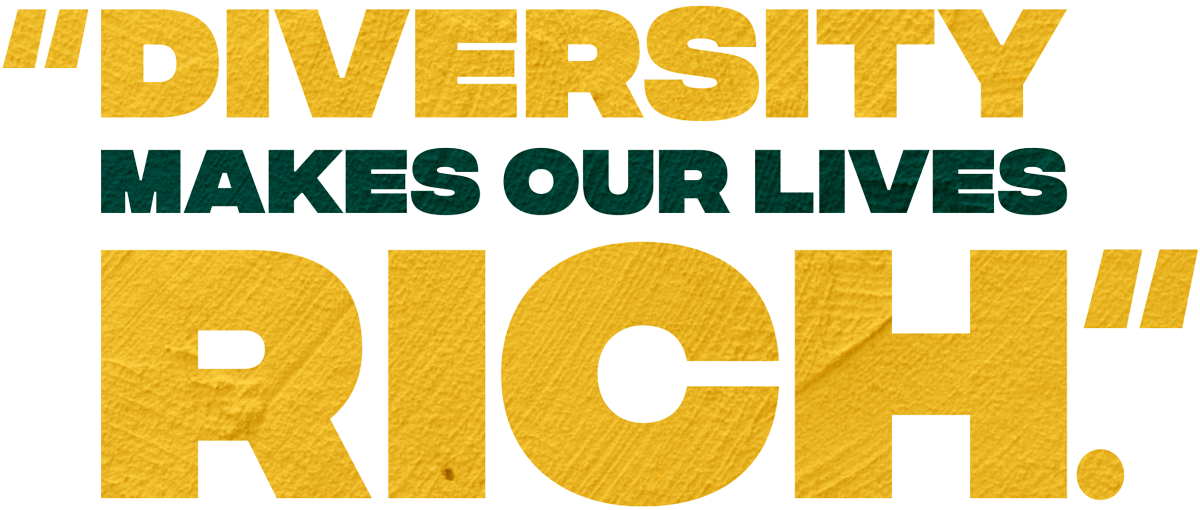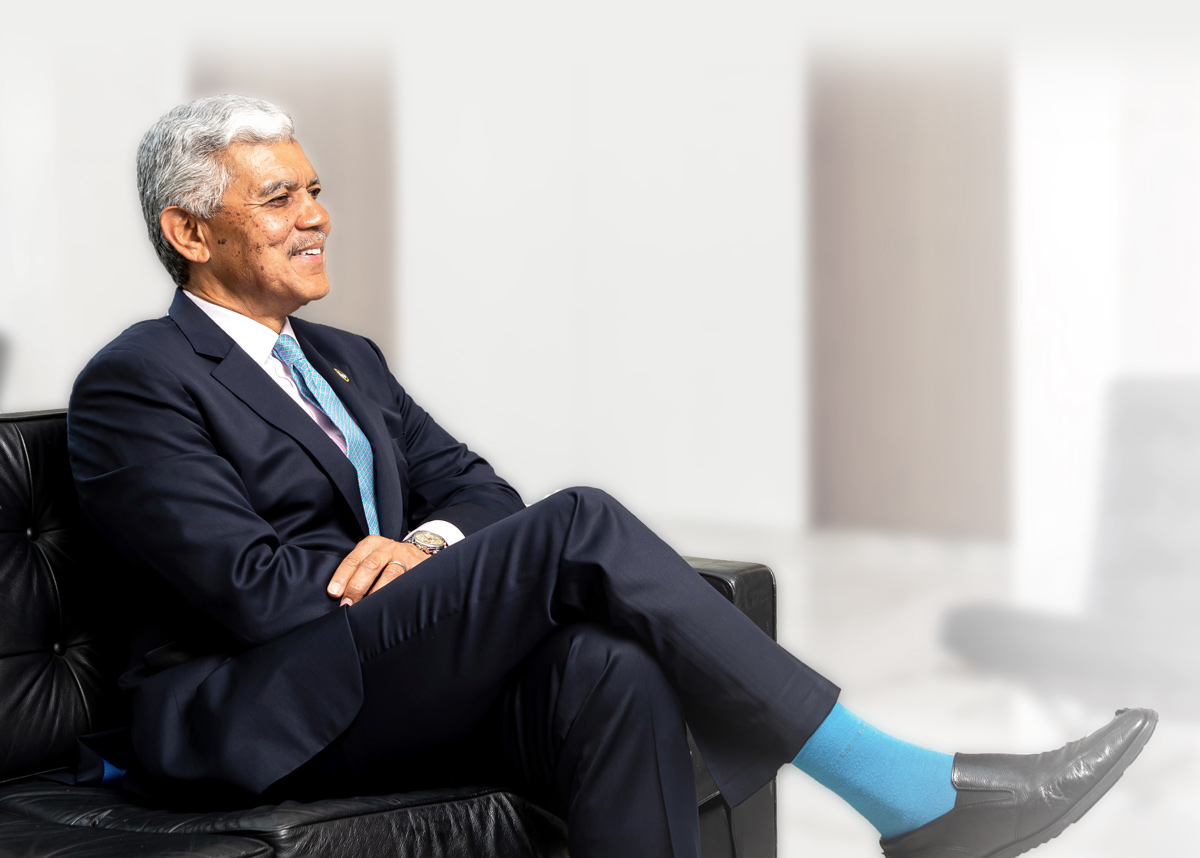Race Matters

Let’s start broadly. Generally speaking, how would you describe the racial climate on campus, especially as it pertains to students of color and — given the university’s place in the heart of a majority Black city — African American students in particular?
To this end, I asked the Associate Provost for Diversity and Inclusion and Chief Diversity Officer Marquita T. Chamblee to conduct a broad campuswide climate survey. In 2018, the survey was sent to all faculty, staff and students at Wayne State, and the results were published and shared in a town hall a year later. Overall, people felt very positive about the climate: People chose to come to Wayne State because of the diversity here, and they value our diverse community. They also indicated a feeling of belonging to the campus community and expressed being happy to be a student, staff or faculty member here. People also felt it was very important that we are committed to building a diverse community and generally felt like we are doing a good job with that.
We have other feedback channels as well. Housing residents have regular opportunities to provide feedback to our staff about the community in which they live, including our annual participation in a comprehensive national survey on housing and residence life. WSU’s survey results have indicated a very high level of satisfaction by students with regard to feeling safe in their rooms and halls, and this includes students of color. This, like student academic success, is a core area we are continuously monitoring and addressing in our residential communities.
Overall, it’s good, but it’s not perfect by any means. On a campus this size, incidents happen. People do things that are not consistent with our culture, and we have to respond quickly. We are careful to be guided by the facts, and to take actions when necessary to protect the safety of our campus community. There is also a wider context we have to consider with the public unrest and the social justice movements that have been experienced across the nation. These movements, and the events that caused them, are sources of both tension and hope. Our campus is not a bubble, and what happens outside our university affects people inside. We understand that, and we listen to input and concerns no matter the source — and we are open to action and change if necessary. But we will not, under any circumstances, allow racial hatred to be perpetrated on members of our campus community.
How would you describe the university’s relationship with the city’s Black and brown communities?
The city’s bankruptcy was a harrowing moment for the city and for Wayne State. We could not survive without the city, and I don’t think it’s a stretch to say that the city would not survive without Wayne State. As an anchor institution in the heart of Detroit, we helped lead the city’s resurgence in key ways. Our police department made the Midtown community and neighboring areas feel safe, which led to an environment where businesses could flourish and investments were welcomed.
Do you think there are any misperceptions in these communities about that relationship or the university’s commitment to diversity, equity and inclusion? If so, what would you say are the most common misperceptions? How has Wayne State worked to correct that?
But the truth is that we have contributed tremendously to K-12; for example, we have dozens of programs with Detroit Public Schools alone where we’re teaching kids about things like music, the importance of eating right and exercise, and how to do computer coding. We are very reasonably priced among Michigan’s public universities, and for a research university — and we have a number of great financial aid programs that increase access, including the Heart of Detroit Tuition Pledge and the Warrior Way Back program to aid returning students.
One big misperception was the recent incident in Atchison Hall, where a student’s door was vandalized. Unfortunately, rumors and misleading media accounts led to a misunderstanding of the facts, but the reality is that Wayne State leadership worked quickly to provide the student with help, care and support, while also engaging the Atchison community. We were able to satisfy completely the student’s requests for additional support, including waiving room and board fees for the semester. We sent a communication to all WSU housing residents clarifying the incident and reinforcing our expectations for respectful behavior in our housing communities. We also contacted the Wayne State University Police Department, and they conducted an extensive investigation into the incident. That report was FOIA’d and published in a recent news article, and revealed that the police found zero evidence that this event was racially motivated.
I think one of the most important things we can do to correct misperceptions is listen to what people have to say, then go out into the community and establish trusted relationships. We do this by sharing information through magazines such as this one, attending neighborhood events, meeting with church and other community leaders, and sharing frequent updates with the local media.
Concerns about race certainly predate your time at the university, but you’ve moved over the years to address a range of issues. What are some of the key advances WSU has made on issues of race and diversity during your time in leadership?
We’re not there yet, but we are moving in the right direction.
To that end, last fall, Black undergraduate enrollment for first-time college students at Wayne State was up an astonishing 59%, and overall Black enrollment was up 3.6% over the previous year.
We’ve also made dramatic improvement in our School of Medicine. For years, Wayne State enrolled one of the highest numbers of Black medical students in the country, but the number of minority students began to dwindle in the late 1990s and early 2000s, the unintended victim of financial restraints and budget cuts. The decrease bottomed out with the incoming Class of 2015. That year’s class of 290 first-year medical students contained five African American students and two Hispanic students, the lowest number in those categories in the school’s modern history.
Again, we put together a plan and tackled the problem. We dramatically turned the situation around, and the numbers continue to climb. The graduating Class of 2021 includes 33 African American students, 25 Hispanic/Latinx students, five Native American students and 65 students from socioeconomically disadvantaged backgrounds. This turnaround was accomplished without lowering expectations in grade point average or MCAT scores.
Other priorities on my agenda when I first came to Wayne State were to create the position of chief diversity officer and the establishment of a dedicated space where students of color would feel welcomed and included. We created both the position and the Office of Multicultural Student Engagement in 2015. OMSE has been so well received that we are looking for additional space to expand its work on campus.



Conversations about race in America have been especially heightened since the protests last summer that followed the death of George Floyd. With the trial of the officer accused of killing Floyd now in the news, do you have any thoughts about how the national conversation has gone over the past year?
But as sickening as that video footage was, I remain hopeful that this time we have reached a moment of real change in America — and I want that change to start right here at Wayne State. Shortly after Floyd’s death, I created the Social Justice Action Committee, which I charged with examining how to reduce and eliminate implicit and explicit biases, and improve diversity, equity and inclusion on campus. The committee examined every aspect of campus operations, from policing and student success to the retention and hiring of diverse faculty and staff. It reported its findings to me late last year, and we published them to the campus community in early April. Additionally, the Wayne State University Police Department announced last summer the creation of the National De-escalation Training Center, which is designed for law enforcement officers across the region and the country. It provides special assessment and situational skills training to reduce conflict and avoid potential tragic scenarios for citizens and officers.
The Chauvin trial certainly renewed the pain we felt at Floyd’s death. For me, it renewed my commitment to creating an environment in our own corner of the world here on campus that is welcoming, inclusive, equitable and just. I think we have done excellent work already toward this aim, but there is always more that we can do. We must never become complacent.
Can you share what changes may be on the horizon as a result of the ongoing discussions you and other members of university leadership are having about diversity, equity and inclusion?
The report builds upon the university’s current diversity, equity and inclusion work, and implementation of a number of recommendations — including creation of a DEI Council, expansion of space for the Office of Multicultural Student Engagement, and hiring an additional position in the Office of Diversity and Inclusion — has been initiated.
Other recommendations will be implemented based on priority and available resources; this includes enhancing efforts to hire a diverse workforce across the university. Moving forward, this will include a critical examination of policies and procedures, and processes for recruiting, hiring and retaining diverse staff, particularly focused on strategies for advancement.
You’ve talked in the past about your personal commitment to racial equality. Can you give some insight into what about your own experiences fuel this commitment?
While my upbringing certainly fueled my interest in diversity, I think my passion for racial equality began in earnest when I started studying health disparities during an ophthalmology rotation in Saint Lucia. Learning about the injustices of the health care system and how they lead to radically different health outcomes in minorities was quite an awakening, and it heavily influenced the course of my career and my life.
Most recently, Governor Whitmer appointed me to serve on a task force charged with addressing the racial disparity in COVID-19 infections and deaths in Michigan, and we implemented a number of statewide initiatives aimed at communicating more effectively with African American communities and removing barriers to testing. By the fall, we saw that those disparities for new cases were effectively eliminated. This is an incredibly important takeaway because we proved, right here in Michigan, that if we focus on solutions and work hard on implementing them, we can achieve health equity.
Are there are any parting ideas you’d like to share, perhaps related to a matter we haven’t touched on?
I’ve talked about social justice and health equity, and these are so important to creating a society that truly lives up to the ideals encoded in our Constitution. That aside, diversity is just a beautiful thing. When we make an effort to understand someone from a different perspective or upbringing from us, we become better people — wiser, more thoughtful. Diversity makes our lives rich. Going back to the Hughes poem, I love the hope and optimism in the closing: “We, the people, must redeem the land. … And make America again!” I remain hopeful for the America we can become.